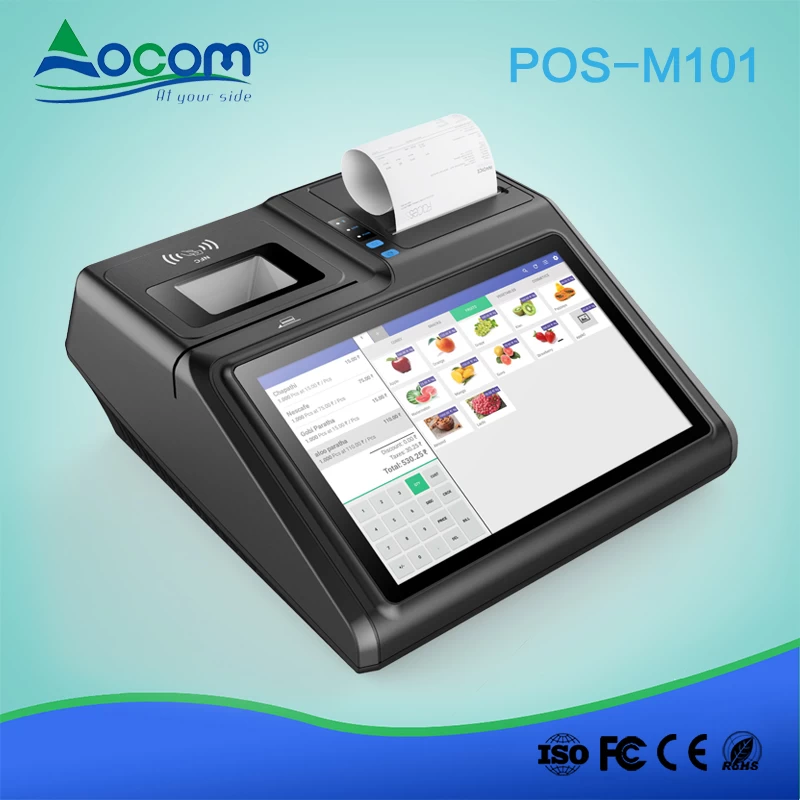POS Software for restaurants with built-in VIP programs that retain customers
Exactly How POS System Works: A Comprehensive Overview for Entrepreneur
Understanding the Parts of a POS System

Just How Sales Purchases Are Processed
When a client makes a decision to purchase, the sales purchase initiates a series of systematic steps within the POS system. The cashier inputs the items being purchased, which are checked through a barcode visitor or by hand gotten in. This action obtains product details, consisting of pricing and applicable tax obligations, from the system's database.Next, the customer is presented with the overall quantity due. The POS system then processes the settlement, whether through cash money, credit rating card, or mobile payment approaches (Restaurant POS Software). For electronic repayments, the POS securely interacts with payment cpus to license and validate the transaction.Once the settlement is verified, the system generates an invoice, which can be printed or sent electronically. This receipt acts as evidence of purchase for the customer. The deal information is videotaped in the system, making sure exact sales documents and monetary tracking for the organization.
Inventory Monitoring and Tracking

Reliable stock administration and tracking are necessary components of a POS system, as they ensure that organizations maintain suitable stock degrees and decrease discrepancies. A durable POS system permits real-time stock updates, mirroring returns and sales immediately. This allows local business owner to keep an eye on stock degrees accurately, making sure that popular products are readily offered while preventing overstocking of much less preferred products.Additionally, progressed POS systems offer functions such as computerized supply alerts and reorder pointers, enhancing the purchase procedure. Barcoding and RFID innovation improve precision in tracking inventory motion, reducing human error. Considerable coverage tools supply insights right into inventory turn over prices, helping businesses make notified decisions about acquiring and product offerings. Eventually, reliable supply administration with a POS system not only improves operational effectiveness yet also enhances customer satisfaction by guaranteeing product accessibility.
Assessing Customer Data and Insights
Client data evaluation serves as an effective tool for companies making use of a POS system (Restaurant POS Software). By accumulating and checking out purchase data, organizations can discover beneficial insights concerning client behavior and choices. This evaluation enables them to determine purchasing fads, peak buying times, click here and preferred products, thereby notifying stock decisions and advertising and marketing strategies.Additionally, companies can sector their consumer base, enabling for customized marketing initiatives that deal with particular demographics or purchasing routines. Comprehending customer commitment patterns also aids in establishing click here targeted promotions and incentives programs.The data amassed from a POS system can likewise reveal understandings into consumer comments, enabling businesses to make enlightened decisions pertaining to item offerings and service renovations. Eventually, leveraging customer data properly can improve the overall buying experience, foster customer satisfaction, and drive profits growth
Benefits of Applying a POS System

Frequently Asked Questions
What Types of Businesses Can Benefit From a POS System?
Numerous companies take advantage of a POS system, including stores, restaurants, beauty parlors, and shopping systems. These systems streamline deals, supply management, and customer information, boosting functional performance and improving consumer experience across varied sectors.
Just how much Does a POS System Commonly Cost?
The cost of a POS system normally varies from a few hundred to a number of thousand bucks, depending upon attributes, equipment, and software application. Organizations must take into consideration recurring costs for assistance, upkeep, and deal handling when budgeting.
Can I Incorporate a POS System With Existing Software?
Incorporating a POS system with existing software is commonly possible. Several systems use APIs or built-in compatibility attributes, permitting organizations to enhance operations and enhance capability by linking various software program applications successfully.
What Training Is Required for Team to Utilize a POS System?
Training for team to make use of a website POS system usually consists of understanding software program capabilities, processing deals, managing stock, and taking care of customer interactions. Practical demos and hands-on practice sessions boost proficiency and self-confidence being used the system efficiently.
What Happens if the Net Decreases While Making Use Of a POS System?
If the web goes down during POS system use, deals might be interrupted. Lots of systems provide offline capacities, enabling fundamental procedures to proceed, but complete functionality, including real-time supply updates, will be restricted. A Point of Sale (POS) system is composed of several essential components that work together to manage and assist in purchases business operations. Effective supply monitoring and monitoring are crucial elements of a POS system, as they guarantee that companies maintain optimal supply levels and minimize discrepancies. Consumer data evaluation offers as a powerful device for organizations using a POS system. Recognizing consumer loyalty patterns additionally helps in creating targeted promos and incentives programs.The information gleaned from a POS system can additionally expose understandings into customer feedback, allowing organizations to make educated choices concerning product offerings and solution renovations. Executing a POS system provides many advantages that can significantly boost organization procedures.